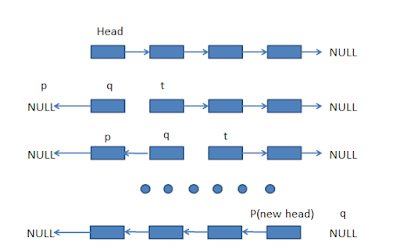Description
After catching Suicune, Spongebob and Patrick thought they were happy enough so they went home. And then they found that Squidward had come home already (:
Squidward told them he need to drum up a marching band fast(for some reason). So he needed their help. Hence Spongebob and Patrick joined Squidward's band.

Today is their practicing day. Squidward is teaching all the members how to move at a performance. At a performance there are N rows. And in the i-th row, there are szi people. Note row may be empty(i.e. szi = 0). Everyone plays exactly one musical instrument. The musical instrument played by the j-th people in the i-th row is represented by a lower case letter cij.
Squidward ask them to move Q times. In each move, there are four types of moving:
- all the people in the ai-th row move to the front of the bi-th row (without messing up the original order)
- all the people in the ai-th row move to the back of the bi-th row (without messing up the original order)
- exchange all the people in the ai-th row and the bi-th row (without messing up the original order)
- reverse the order of all the people in the ai-th row
Now it’s your turn! You need to help them to move and tell Squidward the final formation in the end.
Hint for reverse:
1. Easy way , but you can only get 2 more correct answers.

But, you should think another way to accelerate your performance to get AC.
Hint:
If you have no idea how to implement, please take it as your reference.
#include <stdlib.h> #include <stdio.h> typedef struct _Node { char val; struct _Node* next; } Node; //list[i]'s head node Node *head[100005] = {}; //list[i]'s tail node Node *tail[100005] = {}; //reverse(list[i])'s head node Node *rev_head[100005] = {}; //reverse(list[i])'s tail node Node *rev_tail[100005] = {}; /* list[a] = 1 -> 2 -> 3 -> 4 rev_list[a] = 4 -> 3 -> 2 -> 1 head[a]->val = 1, tail[a]->val = 4 rev_head[a]->val = 4, rev_tail[a]->val = 1 you can use rev_head and rev_tail to get O(1) reverse */ void swap(int a, int b) { //swap list[a] and list[b] Node *tmp = (Node *)malloc(sizeof(Node)); /* swap(head_node) tmp = head[a]; head[a] = head[b]; head[b] = tmp; */ /* swap(tail_node) */ /*swap(rev_head) */ /*swap(rev_tail) */ } void append(int a, int b) { //append list[a] to list[b]'s behind if(head[a] == NULL) return; if(head[b] == NULL) { swap(a, b); return; } /* tail[b]->next = head[a]; tail[b] = ... ... */ } void reverse(int a) { //reverse list[a] if(head[a] == NULL) return; /* use rev_head and rev_tail to reverse list[a] in O(1) hint: swap something */ }
Input
The first line contains one integer N (1 ≤ N ≤ 105) – the number of rows.
Then N lines follow. First the i+1-th line contains one integer szi – the number of people in the i-th row. If there are some people in the row, a space character and szi characters cij are followed where cij is the musical instrument played by the j-th people in the i-th row. The sum of all the szi is less than or equal to 106.
The N+2-th line contains one integer Q (1 ≤ Q ≤ 105) – the times they need to move.
Then Q lines follow. The i+N+3-th line contains two integer typei, ai. If typei isn't equal to 4, then a integer bi follows(1 ≤ typei ≤ 4, 1 ≤ ai, bi ≤ N, ai ≠ bi) – they are the corresponding information for each moving.
It's guaranteed that:
- The 1st testcase must be identical to the Sample #1 below
- For the first three testcases: 1 ≤ N, Q ≤ 103, the sum of all the szi ≤ 104, all the typei ≠ 4
- For the first six testcases: all the typei ≠ 4
- For the first eight testcases: the number of the fourth type of moving ≤ 100
Output
After all the moving, for each row output all the musical instrument played in that row and then print a newline('\n') character.
If there is no people in some row, just output an empty line.
Note: there are two sample below. "# Sample Input 1/2" and "# Sample Output 1/2" are not the part of input and output.
They are just for marking that the following content corresponds to which sample.